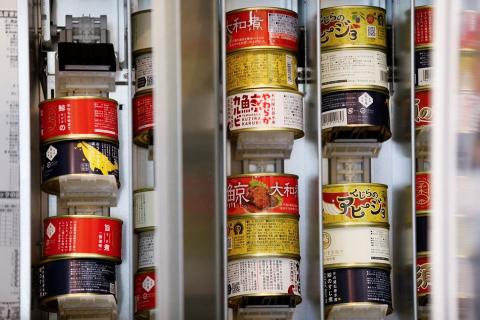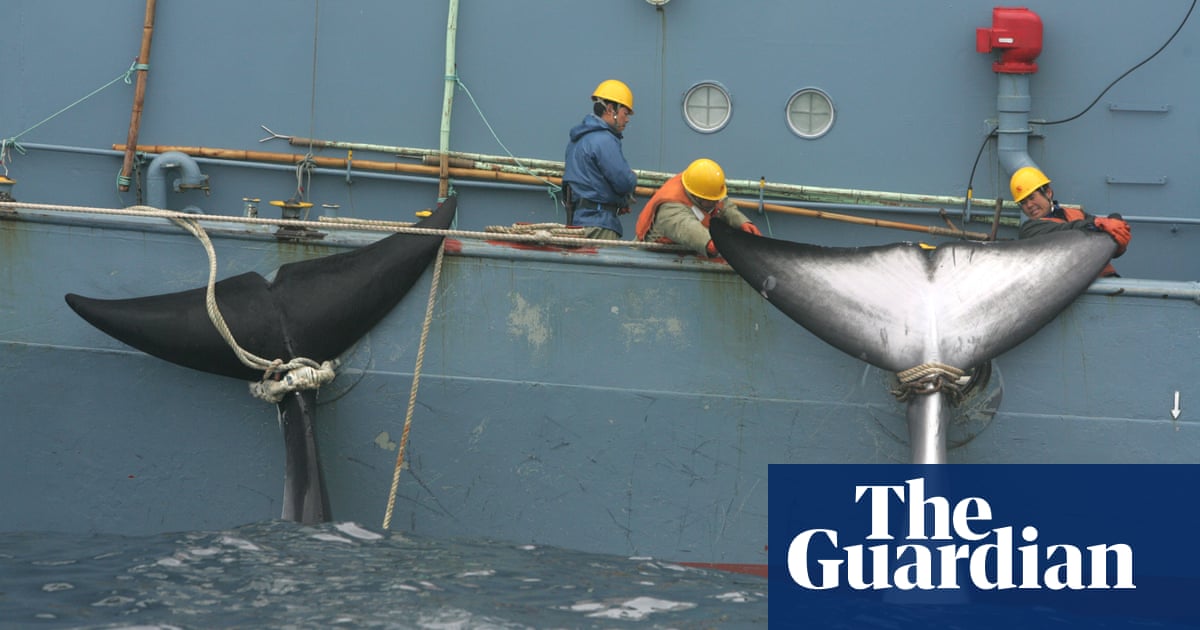
The dish of the day has the appearance and consistency of steak. But the item on the menu at Nisshin Maru in Shimonoseki isn’t brisket or rib-eye – it is a prime cut of the restaurant’s speciality: whale meat.
Every few minutes, chefs in the open kitchen produce another plate of cetacean delicacies – raw sashimi marbled with fat, slices of “bacon”, roast minke whale cut into bite-size pieces and served with a selection of dipping sauces. On a warm weeknight, every table is full.
A short walk away, the outline of the Kangei Maru dominates the shoreline. Completed earlier this year at a cost of ¥7.5bn ($47.4m), the Kangei Maru replaces the ageing Nisshin Maru, a whaling “mother ship” that gained notoriety during the Japanese fleet’s frequent clashes with environmental activists in the perilous waters of the Antarctic. Such vessels allow harpooned whales to be flensed, processed and stored.
In May, the Kangei Maru and its 100 crew will leave Shimonoseki and begin an eight-month expedition off the north-east coast, the maiden voyage of Japan’s first new ship of its kind for more than 70 years.
The new vessel’s range of 13,000km is fuelling suspicion that, five years after Japan abandoned its controversial “scientific” hunts in the Southern Ocean and resumed commercial whaling along its own coastline, Japan is again preparing to slaughter the mammals far from its own shores.
In the new vessel, the whaling industry envisions an age of prosperity and rising demand, ultimately guaranteeing the future of the most controversial ingredient in Japan’s culinary repertoire. The 9,300-ton ship, equipped with a slipway that can haul 70-ton fin whales, can store up to 600 tons of meat at a time, enabling it to remain at sea for long periods.
Last year, whalers caught 83 minke, 187 Bryde’s and 25 sei whales in Japan’s exclusive economic zone, but the appetite for the delicacy is at historic lows. Between 1,000 and 2,000 tons of whale meat are consumed in Japan a year – less than 1% of the 230,000 tons eaten at the industry’s peak in 1962, according to the fisheries agency.
“Some people in the industry thought the return to commercial whaling would bring prices down, but in fact prices are higher and the catch is much smaller, with fewer whale varieties, than it was when Japan hunted in the Southern Ocean,” said Mitsuhiro Kishimoto, a professor in the economics faculty at Shimonoseki City University.
“The relationship between Shimonoseki and whaling is far from broken, but whale meat is too expensive. The price needs to be lower, because if future generations don’t eat whale meat the industry will die.”
The International Whaling Commission (IWC) banned commercial hunts in 1986 but allowed Japan to continue catching a small number of whales in the Antarctic each year for “research” purposes.
In 2014, the international court of justice ordered a halt to the expeditions after concluding the hunts were not, as Japan had claimed, conducted for scientific research. Four years later, Japan pulled out of the IWC and announced it would end the Antarctic hunts, but resume commercial whaling in its coastal waters.
Despite leaving the IWC, Japan has “not given up” on the resumption of whale hunting in the Antarctic, according to Ren Yabuki, director of the environmental and animal protection group Life Investigation Agency.
“That is why they built the Kangei Maru, which is equipped to go whaling in the Antarctic Ocean,” Yabuki said. “I believe it’s possible that whales may be killed again there despite what the international community thinks. That’s what Japan is preparing to do.”
The ship’s owner, Kyodo Senpaku, dismissed the claim. “We left the IWC and so at this point in time it is not under consideration,” said spokesperson Konomu Kubo. “The government has not indicated that Southern Ocean whaling is in its plans, and our mission is to use the new ship to conduct commercial coastal whaling for at least the next 30 years.”
Taxpayers are footing part of the bill for the Kangei Maru, with Shimonoseki city – for decades the centre of Japan’s whaling industry – contributing ¥300m. The rest is from loans that will take Kyodo Senpaku decades to repay as it struggles to resurrect Japan’s heavily subsidised whaling industry amid plummeting demand.
Jun Tezuka, director of the whale industry promotion office at the Shimonoseki municipal government, said the launch of the Kangei Maru was “a dream come true”.
“When Japan started commercial whaling again, the fleet left from this port, and it was a big thing for the city,” he said. “It also meant that people could start eating refrigerated meat caught off the coast rather than frozen meat from the Southern Ocean. And we’ve been able to be more ambitious about promoting whale meat.”
Shimonoseki city serves 100,000 whale meat lunches a year at primary and middle schools – the equivalent to five servings per child – and is home to several dedicated whale meat restaurants and about 100 others that include the dish on their menus. Whale meat burgers are sold at university culture festivals, and chefs are attempting to come up with new ways of cooking its meat. Last year, Kyodo Senpaku opened whale meat vending machines in Tokyo, Yokohama and Osaka to boost sales, and says it plans to open more at about 100 sites.
But the Kangei Maru’s enormous cost means prices are unlikely to fall any time soon. “We want as many people to eat whale meat as possible, but we also have to make profits to repay the loan for the Kangei Maru and get commercial whaling back on track,” Kubo said.
At the city’s Karato morning market, groups of tourists from China, South Korea and Taiwan make a beeline for counters selling freshly made sushi but show little interest in the whale meat – a vital source of protein in Japan after the second world war.
Koji Yoshida, a Karato seafood seller, said whale meat consumption was “a generational thing”, admitting he struggled to sell his stock to people under a certain age. “But if the Kangei Maru can bring back good whale meat – not the tough, cheapest parts we used to serve in schools – then we can show children how good it really is.”












